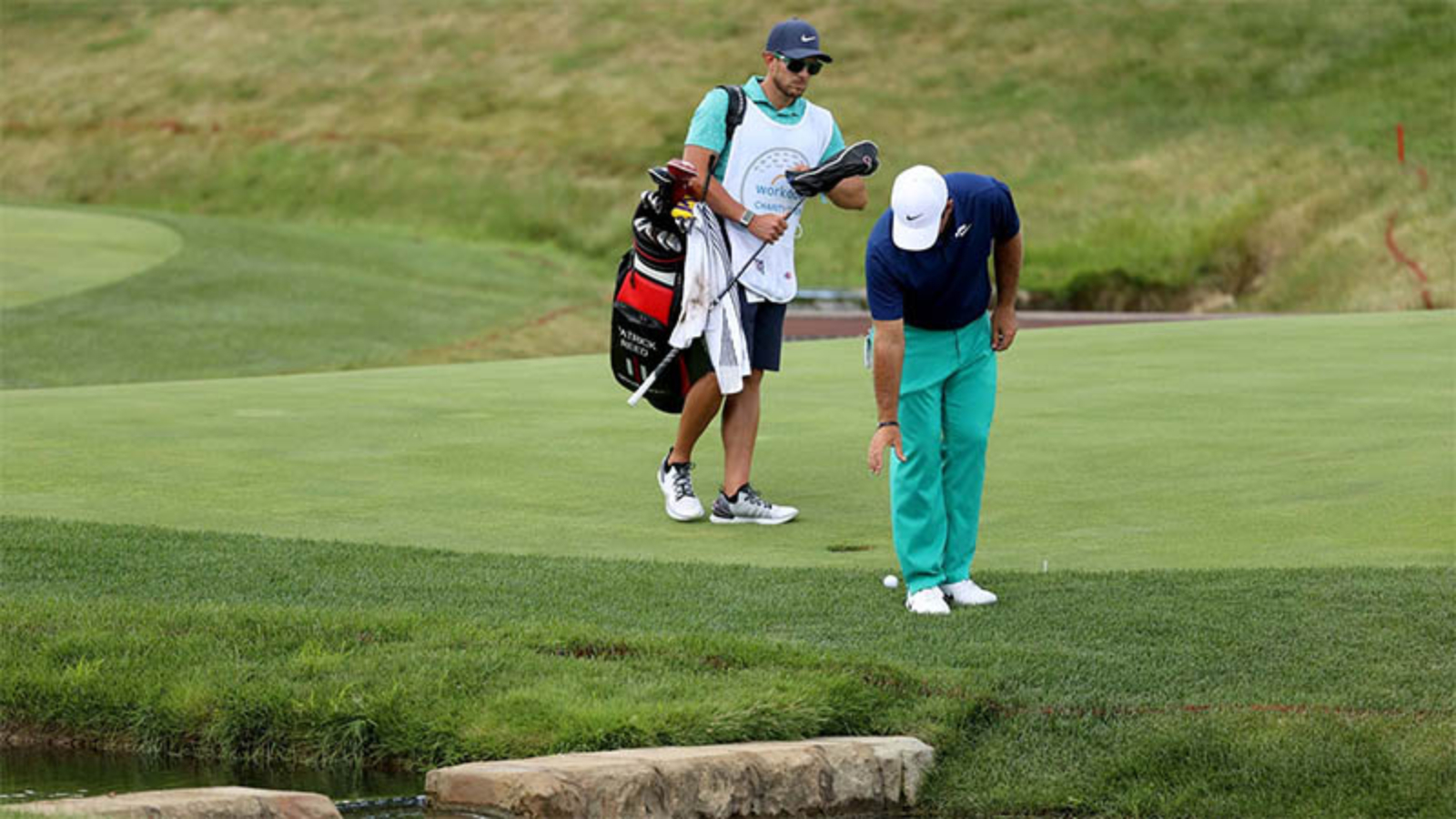A recent change to the Rules of Golf caused a two-shot penalty in a recent PGA Tour event. Here’s how you can avoid trouble when taking relief.
In the first round of the 2024 AT&T Pebble Beach Pro-Am, Rory McIlroy pulled his tee shot to the left into bushes at the par-5 6th hole (his 15th of the day) at Spyglass Hill Golf Course. He declared an unplayable lie, dropped his ball and proceeded to scramble for a bogey on the hole.
Or so he thought.
That bogey turned into a triple-bogey after tournament officials reviewed footage and determined McIlroy had dropped in the wrong place. McIlroy had been 6-under par for the round at one point, but ultimately finished the day at 1-under and ultimately finished the tournament in a tie for 66th place, 15 shots behind eventual winner Wyndham Clark after a rain-shortened, 54-hole event.
McIlroy isn’t the only golfer who can mess up how to drop a golf ball after a penalty or lost ball. We see it all the time in everyday play with amateur golfers. We want everybody – even pros like McIlroy – to understand how, when and where to take a proper drop.
The issue with McIlroy’s relief in this situation lay in a subtle part of the procedure as laid down by the Rules of Golf that had been changed at the beginning of 2023.
In the past, when taking relief for an unplayable lie, a player could go back as far as desired, keeping the original spot of the ball between him/her and the hole, with one caveat: there was a one-clublength buffer in which a player could drop the ball.
This was where McIlroy’s drop went awry, as the Rules change in 2023 removed that buffer. Effective January 1 of that year forward, players are required to drop on that imaginary line between them, the original spot of the ball and the hole. The ball is allowed to roll up to one clublength in either direction without needing to be replaced, but it must be dropped on that line initially.
Rory McIlroy on his drop: “Unbeknownst to me the rule changed in January 2023 where you used to be able to come back online, take a club length either side. That was changed in 2019 to be able to do that.”
This was one of a small handful of other Rules changes that took effect in 2023 – a far smaller set of adjustments than the more sweeping Rules overhaul of 2019.
Rules of Golf: 3 important things to know about taking a drop
Dropping a ball is covered by Rule 14 in the Rules of Golf – specifically, Rule 14.3. Peruse that Rule entry to get the entire scoop on dropping a ball, but for now, here are 3 important things to remember about the procedure.
How to drop the golf ball correctly
The most important thing to remember about dropping a ball is that, as of the 2019 Rules of Golf changes, you must drop the ball from knee height. If you played golf before 2019, you will recall that the standard procedure was to drop from shoulder-height. That is no longer the case. Nowadays, the Rules specify that you must drop from knee height, which is the height of the player’s knee in a standing position (i.e. no crouching to get your knees lower to the ground than they would naturally be).
Can you clean a ball before dropping it?
Yes – if you are entitled to relief by dropping a ball, you may clean it before doing so. Questions arise over cleaning your golf ball when there is the potential for it to be placed, rather than dropped.
A good rule of thumb is that if you are going to be placing your golf ball, you shouldn’t clean it unless your ball is on the green. A common Rules issue arises when a player’s ball is on the fringe and lies in the way of another player’s shot from off the green. If this happens to you, and you are asked to lift your ball, do not clean it. If you do, you will be subject to a one-stroke penalty.
What to do if a dropped ball rolls away from the spot where it lands
Any time you are going to be allowed to drop a ball, the Rules of Golf provide for specific “relief areas,” usually defined as areas within one or two club lengths from a certain point of relief. If you drop a ball within the proper relief area and it rolls outside of it, you must re-drop. If you re-drop the ball and it rolls outside of the relief area again, you are to place the ball at the spot where it landed the second time. If the ball doesn’t remain at rest when placed, you need to find the nearest spot where it will, no nearer the hole.
The USGA houses the Rules of Golf for all golfers to peruse and learn, with several informative breakdowns of all of the Rules and various situations that may arise on the golf course. If you play any amount of competitive golf, you should bookmark it, as well as download the USGA’s free Rules of Golf app.


